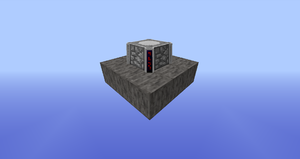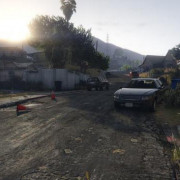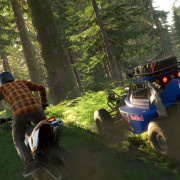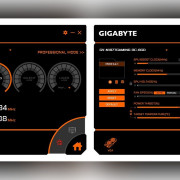Blood altar
Содержание:
Tier 2, Apprentice[edit]

The tier 2 upgrade structure.
At this point, it is probably a good idea to start upgrading the altar. To upgrade the altar, place some Runes near it arranged into a . Once the altar has been upgraded to Tier 2, the Player can choose to either continue using their own blood, or use the blood of others by making a Dagger of Sacrifice and using it on any living mob near the altar, including Players.
Another item to make after obtaining the Tier 2 altar is the Apprentice Blood Orb. This is an upgraded Blood Orb than can store 25,000 LP. The new orb will require infusing an emerald with 5,000 LP in a Blood Altar. With this orb, several more type of Rune and Sigil become available, such as the Rune of Self-Sacrifice and the Air Sigil.
More Power, More Possibilitiesedit
Now that the tier 2 Orb has been achieved, the Alchemy part of Blood Magic can start. Alchemy basically allows to make potions and reagents. Every potion made this way has eight uses. Strong or long lasting effect potions can be made (for example: Haste with a duration of 30:00) with combined effects.
Another branch of Blood Magic now available is Spell casting. These are useful early game ranged weapons and utility items, and it is recommended to at least try them.
Also available are the Air Sigil, the Void Sigil, the Sigil of the Fast Miner, and the Sigil of the Green Grove. A quick summary of their effects, respectively: Crude but fast flight, an endless empty bucket, a portable beacon effect, and a way to use blood as fertilizer.
Создание зелий[]
При размещении связующего зелья, и активных ингредиентов в алхимической стойке, они начнут смешиваться вместе, и их эффект будет добавлен к зелью.Также можно добавить дополнительные эффекты для зелий, которые уже имеют один эффект поставив бутылку обратно с другим связующим зельем и активными ингредиентами.
К сожалению, различные связующие зелья имеют разные показатели успеха. Например, стандартный связующий агент работает 100% для первого эффекта, и только 40%, если вы попытаетесь добавить второй эффект, 16% для 3-го и т.д. Если добавить эффект не удаётся … колба взрывается.
Шоковый[]
Данный набалдашник позволяет сфокусировать элементальную энергию воздуха в виде молнии и становится доступным для изготовления после завершения исследования «Набалдашник для жезла: Шок». Несмотря на то, что при попадании разряда по цели урон меньше, чем от природной молнии, качественные эффекты могут сохраниться (вероятность выше при использовании палочки с таумиевыми наконечниками): свинья может превратиться в зомби-свиночеловека, крипер может оказаться заряженным и т. д. Обязательно следует учитывать и тот факт, что урон наносится не только по цели, но и по всем целям вокруг в пределах двух клеток (только в 4.0.x). Радиус удара молнией составляет примерно 16 клеток.
Лучший жезл для данного набалдашника изготавливается из тростникового стержня с золотыми (таумиевыми) наконечниками.
| Рецепт | Расход аспектов | |||||||
|---|---|---|---|---|---|---|---|---|
| для создания | при активации | |||||||
|
0,1 |
Campaigns[]
The single-player mode includes a tutorial and five standard campaigns of increasing difficulty, with three maps each and two sides to each conflict that the player may choose to play. Completing one campaign at least once unlocks the next, and so on. These are followed by a long randomized campaign across every map three times, followed by a final epic battle. In total, there are 77 matches to play through, but with each standard map played at least five times.
The campaigns each have their own, independent storylines, ranging from traditional to epic and dark to comedic. Before and after each map, the story of each campaign is told by a voice-over narrator, partially in verse, over a series of gradually uncovered images.
- Tutorial
- Voice-over: Steve Kramer
- In this tutorial set in the Doegan Capital, the player is instructed in gameplay by the Great Mage.
From this…
- Howl of Vengeance
- Illustrations: Peter Ledger; Voice-over: Mike Forest
- Stated Difficulty: Beginner
- In Howl of Vengeance, the barbarian leader Rathgar the Raider has conquers the kingdom of Doegan, but the dying king curses him, and the princess escapes to enlist the aid of Aelric the Avenger and his undead army. The player chooses either Rathgar to defend the realm or Aelric to retake it.
- Matchmaker Mayhem
- Illustrations: Maurice Morgan & Dan McMillan; Voice-over: Wendee Lee
- Stated Difficulty: Intermediate
- In Matchmaker Mayhem, Princess Roxanna of Edenvale duels would-be suitors for her hand in marriage. The player chooses either Roxanna to fend off her suitors or Bryan the Bold to win her affections.
- Tartyron Unbound
- Illustrations: Maurice Morgan; Voice-over: Mike Forest
- Stated Difficulty: Experienced
- In Tartyron Unbound, Tartyron, the Lord of Chaos, escapes his subterranean prison and is opposed by the lords of Order, in a conflict of law versus chaos. The player chooses either Tartyron in his fight to escape, or the Circle of Order in their effort to drive him back to his prison.
…to this…
- Nuts and !Bolts
- Illustrations: Brian Menze; Voice-over: Steve Kramer
- Stated Difficulty: Veteran
- In Nuts and !Bolts, two feuding, treasure-hunting brothers, Garrulos the Occasionally Good and Wormskull the Artificer find a magical pearl, which Garrulos steals. The player chooses either brother as they fight over the pearl.
- This is the most overtly cartoonish and comedic of the campaigns. It introduces a new threat, the Juggernaut, a large-sized neutral unit that rampages through the final map and cannot be controlled by the player.
- Harvest of Horrors
- Illustrations: Alex Nino; Voice-over: Steve Kramer
- Stated Difficulty: Expert
- In Harvest of Horrors, the monsters of the Kingdom of Nix, led by Redfang the Reaper, prey upon the villagers of Vanesci Hamlet. The mage Haradan the Hermit shows up to defend the folk. The player chooses either Haradan as they defend the village and take the fight to the enemy, or Redfang as they defend against invaders and pursue them to the village.
- This campaign introduces new units on Redfang’s side, with the Goblin, Harpy, and Enchanter. There is also a cauldron that converts captured creatures to mana.
…And back to this.
- Legendary/Random Campaign
- Illustrations: Brian Menze; Voice-over: Mike Forest, Steve Kramer, Wendee Lee
- In the Legendary Campaign (also titled «Random Campaign»), the player takes the role of a legendary leader who must unify the wartorn land through conquest, with a campaign taking in all the maps. They may create their own character or accept a randomized one with a random selection of names: male, female, elven and monstrous options are all possible. The first map is chosen, the rest are random, and each is taken three times. In each battle, the player faces a randomised opponent, not just in appearance but in unit selections and locations. Finally, the player character has conquered all the realms and rules as overlord, before going to the Hall of Legends to face the Immortals and become one themself. This final battle introduces the dangerously tough guardians.
- There is a peculiar bug here. When characters are made for the Legendary Campaign, they’re always Lawful Good, the one aspect that can’t be chosen. When the Hall of Legends (an in-game leaderboard of player-characters and their scores) is selected from the main menu, they’re all still specified as Lawful Good. However, the Hall of Legends is also displayed between battles, and on these occasions all the characters are specified as Neutral Evil. It seems possible that optional alignments with matching backstories were attempted during development, but then canned, leaving this issue.
Tier 1, Weak Blood Orb[edit]
The Diamond’s transmutation will be complete when it transforms into a Weak Blood Orb. Pull it out of the altar with a Right-click and again to bind it, this uses a heart and fills the Player’s Soul Network with 200 LP. Blood Orbs are the only way to fill up a Player’s soul network (either by Right-clicking with the orb or placing it in an altar that contains LP), and are an important part of crafting with Blood Magic. Never get rid of a Blood Orb, as it will always be of use. The Weak Blood Orb can craft a few basic type of Sigil, perform weak rituals, and make Runes. It also has a maximum LP storage capacity of 5,000 LP.
One of the first things to make with the Blood Orb is a Divination Sigil. It needs an item called a Blank Slate. Place a piece of stone in the Altar with 1,000 LP to make a Blank Slate. Right clicking with the sigil in hand will display how much LP is in the Soul Network, or display information about the Altar, such as the tier, the maximum LP capacity, and how much LP has been collected.
The other two type of Sigil that can be made with the Weak Blood Orb are the Lava Sigil and the Water Sigil. Right-clicking with those will spawn a source of its respective liquid on the ground. This action costs 100 LP for the Water and 1,000 LP for the Lava.
Another useful item is the Lava Crystal that allows a furnace to use LP from the Player’s Soul Network as fuel (25 LP per smelt). It doesn’t need to be a vanilla furnace; a Generator or Steam Dynamo will work as well, however, the Player should take caution so that their Soul Network does not run out of LP.
Кровавые шары.
Все кровавые шары привязываются к игроку, который первый использует его.
Все кровавые шары из этого мода и о них:
Слабый кровавый шар:
Делается на алтаре 1 уровня. В алтарь кладётся алмаз, берётся 2000 LP из алтаря и получается кровавый шар. Вместимость шара — 5000 LP.
Кровавый шар ученика:
Делается на алтаре 2 уровня. В алтарь кладётся алмаз, берётся 5000 LP из алтаря и получается кровавый шар. Вместимость шара — 25000 LP.
Кровавый шар мага:
Делается на алтаре 3 уровня. В алтарь кладётся золотой блок, берётся 25000 LP из алтаря и получается кровавый шар. Вместимость шара — 150000 LP.
Кровавый шар мастера:
Делается на алтаре 4 уровня. В алтарь кладётся слабый кровавый осколок, берётся 40000 LP из алтаря и получается кровавый шар. Вместимость — 1000000 LP.
Кровавый шар архимага:
Делается на алтаре 5 уровня. В алтарь кладётся осколок крови демона, берётся 75000 LP из алтаря и получается кровавый шар. Вместимость — 10000000 LP.
Трансцендентальный кровавый шар:
Делается на алтаре 6 уровня. В алтарь кладётся кристальное скопление, берётся 200000 LP из алтаря и получается кровавый шар. Вместимость — 30000000 LP.
Known Items
- Executioner’s Gloves (Bloodborne)
- Phylacteries (Dragon Age series)
- Magrallen (Dragon Age: Until We Sleep)
- Bloodstone Chalice (The Elder Scrolls V: Dawnguard)
- Potion of Blood (The Elder Scrolls V: Dawnguard)
- Horcruxes (Harry Potter series)
- Blood Crystal (Merlin)
- Bone Steel (Magnus Chase and the Gods of Asgard)
- Crimson Brand of Cyttorak (Marvel Comics)
- Bloodletting thimble (Pathfinder)
- Terror Mask (Splatterhouse)
- Bone of Righteous Mortal Washed in the Three Bloods of Fallen (Supernatural)
- Blood Chalice (Warhammer Fantasy)
- Bloody Grail (Warhammer Fantasy)
- Cauldrons of Blood (Warhammer Fantasy)
- Tower of Blood (Warhammer Fantasy)
- Blood Altar and related items (Minecraft)
Comparator Behaviour
The Blood Altar has 2 methods of outputting a comparator signal. By default, it will provide a signal denoting how much blood it is carrying, similar to a chest. If a Bloodstone Brick is placed directly underneath the altar and any Blood Orb is placed in it, it will output a signal that corresponds to the linked Blood Network’s currently stored LP. This can be useful for automation. It measures how much LP is in the altar compared to the max amount of LP the given Blood Orb has. For example, if a Master Blood Orb is elsewhere collecting LP and an Apprentice Blood Orb is being measured, the comparator output will show as «full» even if the network is well below the capacity the player’s Master Blood Orb.
Users
On Draenor, the Bleeding Hollow clan was fond of using blood in their spells, including a ritual to create dire orcs and another to summon the powerful Blood Moon. They cut their own flesh, and Shadow Hunter Denjai described their magic as being like voodoo but hurting even more.
To survive the harsh desert lands of Tanaris the Sandfury trolls learned the secrets of blood magic — drinking blood allowed them to access the darkest voodoo powers. Several troll tribes including the Sandfury, Vilebranch and Gurubashi could deploy a class of warriors called the «Blood Drinkers», which wore heavy armor, used two-handed weapons and could leech blood from their enemies. Drakuru also had his own Blood Drinkers, which he used in Zul’Drak in the name of the Scourge. Hakkar the Soulflayer, the Loa of Blood, grows stronger with blood he consumes, and was the one who taught the Gurubashi trolls blood magic over a thousand years ago.Blood trolls worship the blood god G’huun and use blood magic. This magic corrupts the creatures around them and turns them into blood beasts.Lorewalker Cho claims the Zandalari use blood magic, though the Zandalari themselves forbid it. This may be because of the proximity of the blood trolls to Zuldazar, or perhaps because of the Zandalari’s historical fight against Hakkar. It is referred to as the old ways, and the Zandalari have only given in to the allure since Zuldazar’s wall to the north fell.
The modern death knights can also specialize in manipulating , giving them the ability to carve into their enemies, sustaining themselves with deadly sanguine strikes, while using the bloody, shattered remains of the dead to fortify their own defenses.
The mogu were able flesh-shapers. They used a vital substance called anima to empower their blood golems. The Dokani clan mogu use blood magic.
In Alterac Valley, Lokholar the Ice Lord was summoned through a blood ritual.
Astalor Bloodsworn used blood magic to empower Blood Golems in Talador during the war in Draenor.
Auras and will
Once you have sufficiently advanced in your path, you will unlock the ability to manipulate the aura, which is to say, the wills infused in the very air around you. There are two important blocks involved in this process, the Demon Crucible and the Demon Crystallizer, both of which are made in the Hellfire Forge.
As you start crystallizing will, you may also discover that there are different types of will in the world. About 90% of the ambient will is the raw will you have been working with. But every so often, you’ll crystallize something different. There’s four other types of wills: Corrosive, Destructive, Steadfast, and Vengeful.
You can also combine one of these types of will crystals with a tartaric gem to store that type of will. Using different types of will may affect your Sentient gear.
Сверхъестественное
Этот раздел является последним — и он не присутствовал в игре до ее последней версии, в которой и был добавлен. У него нет какого-либо конкретного специфического направления, как у всех предыдущих, однако можно смело сказать, что именно тут содержатся самые пугающие и запретные заклинания в мире «Таумкрафта». Используя такие рецепты, вы сможете создать, например, Металл пустоты. Это абсолютно новый материал, который вы можете использовать для создания брони, оружия и инструментов
Обратите внимание на то, что открытие данного раздела не происходит автоматически — вам необходимо достигнуть определенного показателя Безумия, который также часто называется геймерами «варпом». Причем это должно быть полноценное постоянное безумие, а не временное или базовое, так что если вы хотите получить доступ к данному разделу, придется сильно постараться
Но это действительно того стоит, так как вы получите доступ к рецептам Улучшенного хранилища эссенций, Проверке безумия, а также большому количеству различных элементов, сделанных из металла пустоты, и к предметам сингулярности.
Reverse construction
As per user request, below is a construction guide for building a Tier 6 Blood Altar from the ground up, allowing a player to allocate space for a full altar and construct it over time.
| Total Blood Runes | 184 |
| Total Dimensions: 23×23 square, 9 high | |
| Additional Construction Materials | 4x Glowstone 4x Large Bloodstone Brick4x Beacon4x Crystal Cluster60 Misc. Solid Blocks1 Blood Altar (block) |
The Misc. Solid Blocks can be any solid block. They are used to make pillars in tiers 3, 4, and 6. Only the materials of the top blocks of these pillars matter; otherwise, the pillars must just be present. In addition to the listed required materials, bring a stack or two of Sand or some such, to use as an easily removable block to fill space, stand on, and count with when building. These ‘spacer’ blocks are not necessary parts of the final construct, but having them will make the initial build easier.
To reverse-construct a Tier 6 Blood Altar, start on the ground with the outermost ring. Pick a corner, place a single block for spacing, then place 7 Misc. Solid Blocks in a vertical column above that spacer. Place a Crystal Cluster block on top of the pillar. Return to the ground to start a side. Place one additional (Sand) block for spacing on any side of the first spacer, then place a line of 19 Blood Runes. At the end of the line, place 2 more spacer blocks and build another 7 Solid Block — Crystal Cluster pillar. Turn 90 degrees and repeat the process of spacer — 19 Blood Runes — spacer — Pillar 3 more times, to form a 23×23 square area of Blood Runes, spacers, and pillars. This is the Altar Tier 6 ring. Note: The four pillars each float one block above the rest of the ring. This applies to all eight other pillars used in later layers.
Continuing inward, step to the second Blood Rune from any side, and place a line of 3 spacer blocks moving in towards the center of the ring. Place another spacer on top of the last spacer, and place a Beacon on top of it. Place two more spacer blocks to continue the previous line, and then place a Blood Rune on top of the last spacer. Place an additional 12 Blood Runes in a line extending from the first, creating a line of 13 runes. Place another spacer below the last Rune, place 2 more spacers in line, place one more spacer on top of the last one, and place a Beacon on top of the last spacer. Turn, and repeat spacers and runes 3 more times, to form a 15×15 square. This is the Altar Tier 5 ring.
Continuing inward, step to the first blood rune on any side, and drop 3 spacers coming in from it. Place two spacers on top of the last, then use 4 Misc. Solid Blocks to build a pillar and place a Large Bloodstone Block on top. Drop down to the bottom of the pillar, and place a line of 9 Blood Runes moving away from the topmost spacer block. At this point, the Pillars should start 3 blocks above ground, and the Blood Runes should sit 2 blocks above ground. At the end of the line of Runes, place another stack of spacers and another 4 Solid Block — Large Bloodstone Block pillar. Turn and repeat 3 more times, to form a 11×11 square. This is the Altar Tier 4 ring.
The Altar Tier 3 ring is essentially the same as the Tier 4 ring, 1 block further in from all sides and 1 block higher. The pillars are each 2 Solid Blocks and 1 Glowstone block, and hover 4 blocks above ground. The Blood Rune sides are each 5 blocks long, and hover 3 blocks above ground.
The Altar Tier 2 ring is the simplest ring. It consists of 8 Blood Runes, 1 block above the Tier 3 Runes (4 blocks above ground) and 1 block further in from all sides. The center of the 8 rings is empty, and the Blood Altar block itself is placed 1 block above the runes to cover the center opening.
All blocks other than the blocks listed can be any block, including air. Blood Altars can therefore be adorned with any number of creative decorations, or they can be left as open shells. However, as there are four Beacons used to build the Altar, it may be useful to build bases for them into the structure, so as to use their bonuses.
The Spells[]
Spells which give permanent bonuses have a cool down period, all the other bonuses apply to the current rebirth.
| Name | Description | Minimum Blood Required | Cooldown Time |
|---|---|---|---|
| Blood NUMBER Boost | Direct multiplier to your current NUMBER — very effective!
Each blood adds 1 to the NUMBER multiplier. This bonus is indicated as «Blood magic bonus» in the rebirth window. |
1 | None (temporary bonus) |
| Iron Pill | Permanently increases your adventure stats using the formulas:
|
100 | 11.5 hoursThe «Blood Magic» menu button will light up in purple when the cooldown is over. |
| Blood Spaghetti | Increases Drop Chance using the formula:
where blood is the total amount of blood that you have sacrificed during this rebirth. |
10,000 | None (temporary bonus) |
| Counterfeit Gold | Increases the Time Machine’s production; Increases GPS by a % relative to the blood spent. The bonus GPS is equal to
|
1,000,000 | None (temporary bonus) |
| Blood Macguffin α | Unlocked after buying the ITOPOD » «.
Increases the level of a random equipped MacGuffin Fragment.The amount of levels gained is equal to |
1B | 23.5 hours |
| Blood Macguffin β |
Evil difficulty — Unlocked after buying the ITOPOD Further increases the level of all your MacGuffin Fragments.The amount of levels gained is equal to
(you see β is better than α: less blood for more levels, so it’s better to put blood here) |
1M | 1 day and 23.5 hours |
The following table shows how much blood is needed in MacGuffin α and β spells to increase MacGuffin levels by a specific amount.
Суть модификации
В то время как большинство модификаций просто добавляет предметы, локации, существ, устанавливает рамки, задает цели и так далее, в данном случае весь мир полностью меняется с установкой и активацией Thaumcraft 4. Рецепты исследований полностью переворачивают ваше представление об игре, так как в ней становится гораздо больше глубины. Дело в том, что каждый предмет в мире получает свою энергию конкретного аспекта. Вам же предстоит изучить все существующие в мире аспекты, а затем собирать энергию конкретных, чтобы использовать рецепты, о которых более подробно будет рассказано ниже. Таким образом, можно сказать, что в «Майнкрафте» появился свой магический мир, который делает проект в два раза более увлекательным и разнообразным. Подобный резонанс в мире фанатов этого шедевра компьютерной игровой индустрии создала только модификация, позволившая не ограничиваться развитием до меча и лопаты, а продолжить его до космической эры. Но сейчас речь идет не о технологической модификации, а о моде Thaumcraft 4. Рецепты исследований будут в данной статье играть ключевую роль.
Сингулярности[]
Своеобразная вершина возможностей тауматургии в области атаки — набалдашник сингулярности. При активации данного набалдашника из жезла вырывается сфера разрушительной энергии, перемещающаяся со средней скоростью и по очень пологой траектории вперед. При попадании в цель сфера взрывается с большой силой (без улучшений жезла и набалдашника на урон эффект подобен взрыву крипера).
Для изготовления данного набалдашника сначала потребуется изготовить амулет сингулярности. Для изготовления этих вещей потребуются все виды аспектов из жезла по 25. При активации данного набалдашника потребляются все аспекты, но количество расходуемых аспектов определяется случайным образом в указанном интервале.
Также при взрыве от набалдашника сингулярности может появится узел ауры с теми или иными основными аспектами (в основном в таком узле количество одного аспекта равно 5).[уточнить]
| Рецепт | Расход аспектов | |
|---|---|---|
| для создания | при активации | |
| 25 | Нет | |
| 25 | 0,5 — 2,5 |
Блоки[]
Механизмы
| Изображения | Название | Описание |
|---|---|---|
| Магический верстак | Выполняет функции обычного верстака, а также используется для создания магических предметов. | |
| Стол исследований | Необходим для дальнейших изучений исследований, способствуя их открытию. Изменена механика изучения. Теперь не нужно собирать аспекты для изучения, вместо этого они выдаются вместе с исследованием. |
Строительные
Дерево
| Изображения | Название | Описание |
|---|---|---|
| Древесина великого дерева | Брёвна великого дерева, из них состоит само дерево. | |
| Древесина серебряного дерева | Брёвна серебряного дерева, из них состоит дерево. | |
| Великодревесные доски | Доски из великого дерева. | |
| Серебродревесные доски | Доски из серебряного дерева. | |
| Великодревесные ступени | Ступени из великого дерева. | |
| Серебродревесные ступени | Ступени из серебряного дерева. | |
| Великодревесная плита | Плита из великого дерева. | |
| Серебродревесная плита | Плита из серебряного дерева. | |
| Листва великого дерева | Из листвы состоит крона великого дерева, также в листве может быть паутина. | |
| Листва серебряного дерева | Из листвы состоит крона серебряного дерева, с небольшим шансом может выпасть саженец серебряного дерева. Используется в декорациях из-за яркого мерцания. |
Декоративные
| Изображения | Название | Описание |
|---|---|---|
| Свеча | Блок аналогичный факелу, за исключением того, что свечу нельзя ставить на стену. Можно покрасить. | |
| Нитор | Мерцающий огненный шар, используется для освещения территории, также является ингредиентом для крафта. Можно покрасить. | |
| Вымпел | Аналог флагов из оригинального Minecraft, за исключением того, что вместо узоров на них можно нанести изображение аспекта. Для этого необходимо нажать ЛКМ по вымпелу пузырьком с необходимым аспектом. | |
| Янтарный блок | Прозрачный блок, используемый для декорирования и компактного хранения янтаря. | |
| Янтарная кладка | ||
| Блок плоти | Декоративный блок, удобен для хранения большого количества гнилой плоти. | |
| Блок таум-металла | Декоративный блок, можно экономно хранить слитки таум-металла. | |
| Блок алхимической латуни | Декоративный блок, удобен для хранения алхимической латуни. | |
| Блок пустотного металла | Декоративный блок, можно экономно хранить пустотный металл. | |
| Ящик | Блок со случайным дропом, встречаются только в лабиринте разума. | |
| Урна | Блок со случайным дропом, встречаются только в лабиринте разума, в некоторых случаях и в других структурах, добавляемых модификацией Thaumcraft 5. |
Заражённые
| Изображения | Название | Описание |
|---|---|---|
| Заражённая плесень | ||
| Заражённая земля | Зачастую большое количество такой земли, можно встретить в заражённых землях, имеет тёмно-розовый цвет. | |
| Заражённая скала | ||
| Заражённый гейзер | ||
| Заросший заражённый камень | ||
| Заражённый пузырь | ||
| Заражённое бревно | Остатки деревьев; зачастую большая часть ствола отсутствует, со временем полностью исчезает из за «Эффекта гниения». | |
| Шуршащая трава |
Руды
| Изображение | Название | Описание |
|---|---|---|
| Янтарная руда | Является единственным источником янтаря. Обычно находится около поверхности. | |
| Киноварь | При переплавке этой руды, получается ртуть. | |
| Грозовые кристаллы | Генерируются в пещерах, в основном возле поверхности. При избытке вис-энергии растут. |
Растения
Все растения в модификации Thaumcraft имеют магическое происхождение, ресурсы получаемые из деревьев являются более пригодными для работы с магической энергией вис, нежели другие виды древесины.
| Изображение | Название | Описание |
|---|---|---|
| Саженец великого дерева | Огромное дерево, обладающее особыми магическими свойствами, поэтому очень часто используется в тауматургии. Не предоставляет особой сложности в нахождении и разведении, уступает по свойствам серебряному дереву. | |
| Саженец серебряного дерева | Данный вид растительности встречается довольно редко, по качеству превосходит великое дерево, участвует при изготовлении механизмов для алхимии. Можно найти в лесных биомах, но чаще всего встречается в магическом лесу. | |
| Сребролист | Растёт рядом с серебряными деревьями в количестве до 10 штук. Положив в сетку крафта, можно получить ртуть. | |
| Огненный жемчуг | Данное растение можно найти только в пустыне. Положив в сетку крафта, можно получить огненный порошок. | |
| Висомор | Произрастает в магическом лесу, испускает пары, при нахождении рядом с висомором можно получить эффект тошноты на 10 секунд. | |
| Вечноцвет | Цветок, получаемый путём алхимии, довольно дорогой в создании, но его способность поглощать заражение оправдывает его цену. |
 where blood is the amount of blood sacrificed to this spell.
where blood is the amount of blood sacrificed to this spell.









